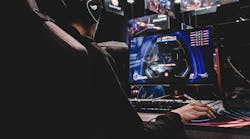As the move towards digital transformation has intensified, digital twins have garnered significant attention -- and for good reason.
While there are several application specific variations, the most basic definition is the ability to provide a digital version of a physical object. This occurs by leveraging a wide array of inputs combined to provide an accurate representation including live, historical, and physical data.
Of course, the true value of any digital twin is what the business ultimate does with the technology. "We see a wide range of situations in manufacturing, construction, planning, and maintenance where there is a great deal of value including reducing costs for building and maintenance," says PureWeb CEO Barry Allen.
Of course, there is still a lot of room to grow, and the future of digital twins is a predictive rather than historical model, explains Allen. ""We're seeing these photorealistic worlds, driven by game engine software that allows the inputs to control the game and actually predict things. If you imagine a production line that has a schematic mapping it out. With IoT sensors providing live inputs, you could actually predict output of a production line," he says. "If sensors identify a failure at one stage in the line, the data enables the video game style simulation to accurately predict the outcome in terms of output."
PureWeb is focused on providing a version of digital twins based on patented technology to integrate multiple agents into a game, map or structure. "That IP allows us to have low code or no code ability to tie all these inputs together," he says. "Our experience in gaming allows us to tie those inputs with the game creators so that the inputs from IoT sensors actually control the gamified environment."
In addition to a production or assembly line, this same technology could come into play for a utility power grid, explains Allen. "It would mean being able to look at hypotheticals such as: If there was a snowstorm here caused flooding there resulting in a transformer fire, where does the power go out?" he says. "This type of insight would allow you to better manage loads, such as moving power from a low use transformer to burnt out area."
This same technology empowers field technicians for a petroleum pipeline. If one of the sensors starts running hot, a live feed comes into the game, and it is visually apparent on a dashboard. "This allows you to send out a worker to that pipeline at a specific location to fix the issues. He's got a digital twin on his tablet that knows whose location that moves him through the facility," he says. "He can look up at the valve or sensor and using XR he can visually see the part, serial number and repair history of the part he needs to address."
Or consider a project such as a new highway or system of pipelines. “How do you measure progress on a project like that in real time? You may be flying drones and capturing LIDAR data. On a simple project you may have 500 gigs of LIDAR data per day,” he says. “How do you ingest that? The PureWeb technology allows companies to automatically ingest LIDAR data right into the game environment, which shows real time progress whether its removal or deployment. You can quickly see what the progress means for your output. The game itself will actually know if you fall behind on task A that it's going to affect the timeline for the finished product by X amount of time.”Of course, the real power of digital twins means cutting the cord from the power desktop environment. In this iteration the digital twins can be fully integrated into data capture, allowing companies to look at the analytics, track trends and ask questions. As such, it is a very data heavy environment often bound to the desktop. The future will have most of the data now residing in the cloud, which is where 5G will become a huge enabler streaming data into the game. Currently, the enterprise game companies are creating tools to ingest that data, so that that data can be understood by the game. However, most of the big digital twin suppliers, do not have the tools or the expertise today to create the collaborative environment, or to just publish at scale and distribute.
The more mobile the better. "In a mobile workforce or a gig economy where people are remote, businesses cannot count on that kind of licensing access to hardware," Allen says. "Businesses need to be more and more mobile. The example of a field repair technician walking down the pipeline through the direction of the digital twin only happens when you are mobile."




